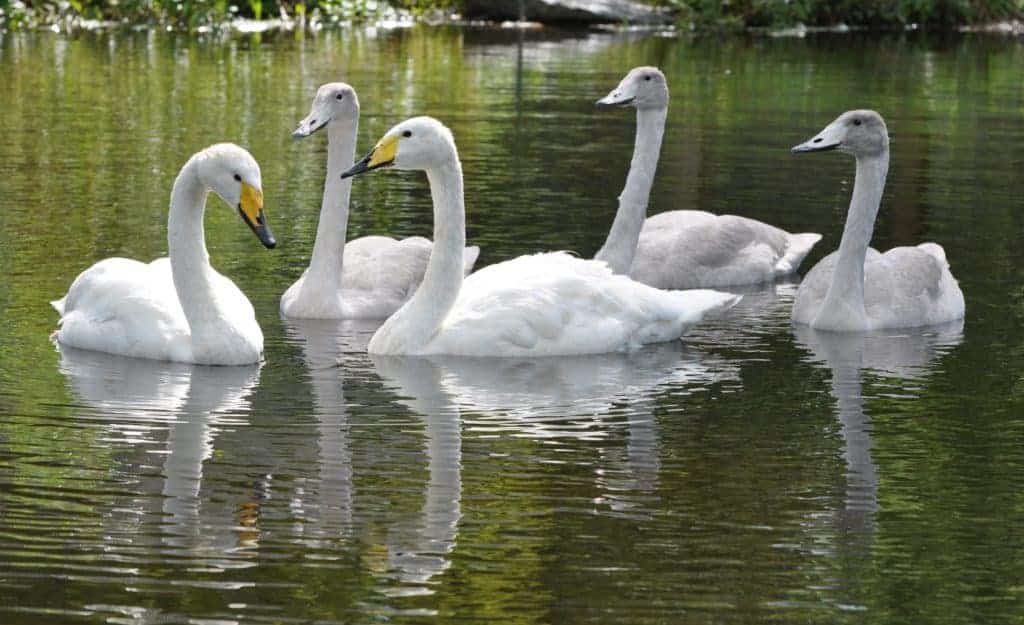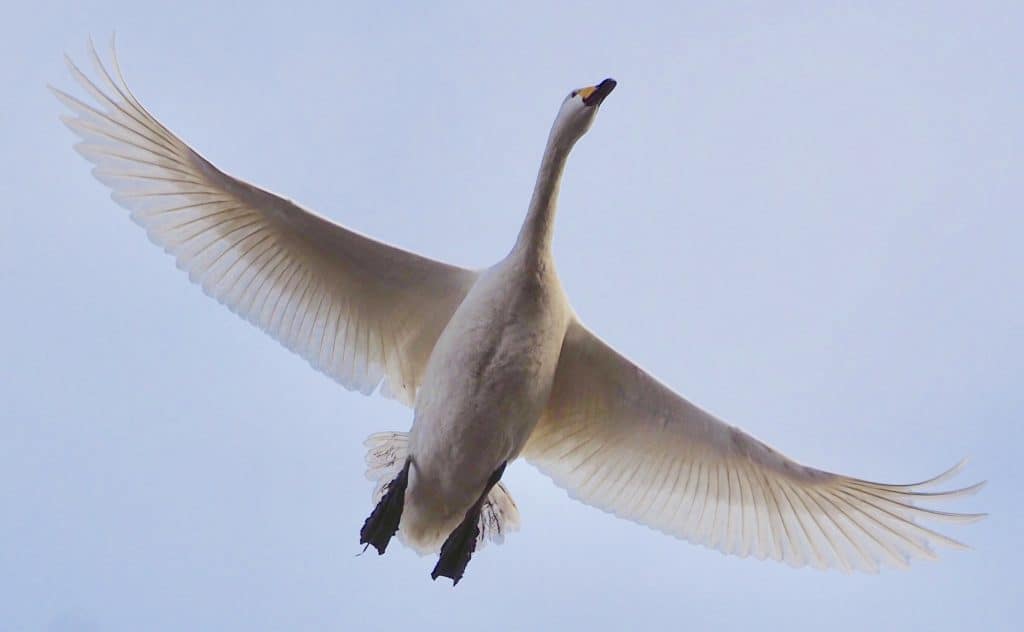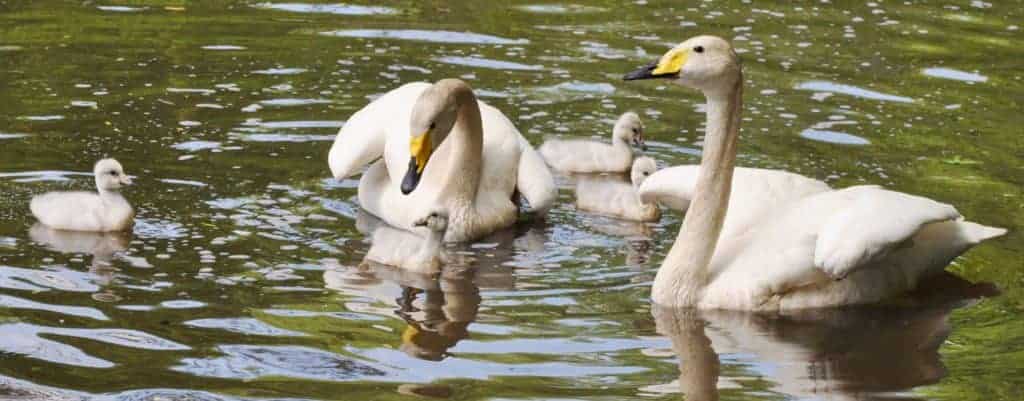Whooper Swan

Bigger than a Bewick’s Swan Cygnus columbianus bewickii (a subspecies of the Tundra Swan), the Whooper Swan generally has more yellow on the bill. The head shape tends to be more triangular and when swimming, the breast appears to bulge at the waterline.

Cygnus cygnus
Except for small numbers of Icelandic birds, this large white swan is a migratory species and is seen on estuaries and wetlands around the United Kingdom. Our localised winter population and small breeding numbers make it an Amber listed species. They are on Schedule 1 of the Wildlife & Countryside Act 1981, the tightest protection afforded to birds in this country. Globally the population is of Least Concern, being widespread across Iceland and Scandinavia E to NE Siberia; wintering in W & C Europe, around Baltic, North, Black, Caspian and Aral Seas, E to coastal China and Japan. In many parts of its range, the Whooper Swan is protected.
The larger of the two Arctic swan species visiting Britain, the Whooper Swan has a long thin neck, which it usually holds erect. Its black bill has a large patch of yellow forming a pointed ‘v’ shape on either side, extending to below the nostrils.

A few pairs of Whooper Swans nest in Scotland. An average clutch of 4–5 creamy to yellow tinged eggs are laid on a substantial mound of plant material. Soft grass and a little down line the nest. Incubation is around 35 days. Young have the familiar grey tinge of cygnets, though at the first post-juvenile moult they become white.
FURTHER READING
Joshua C. Wilson, Kevin A. Wood, Larry R. Griffin, Kane Brides, Eileen C. Rees, Thomas H. G. Ezard (2025) IBIS International Journal of Avian Science.
Share this page